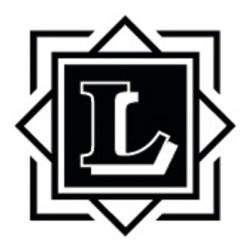Analysis
Previously MZ, the husband (H) and CR, his wife (W) had lived in West Africa. Initially H’s family had been against the marriage but after two children were born to the couple the wife was fully accepted. In late 2005 H and W bought their first flat, in Belgravia (Flat A) for a total cost of £1.62m. The deposit of £155,000 was provided by FZ, H’s father (F), as well as a further £217,000 towards the purchase. The balance came by way of mortgage of £1.24m, which was guaranteed by both H and F. The property was purchased in the name of COG Limited, a company which was set up by H who chose the name representing the first two or three letters of the first names of W and their two children. In emails between October 2005 and May 2006, H was described as ‘the ultimate beneficial owner’ or ‘the ultimate beneficiary of the company’. F was a man of immense wealth and H worked with him in his businesses and was supported by him.
In August 2007, a shell company, IUL, was incorporated in the BVI and one share issued to its director, a Ms. A, in the Seychelles. Ms. A transferred her one share to H. It was then cancelled and 50,000 shares were issued to H who was granted a very wide general power of attorney to deal with company affairs.
In early 2009 H and W decided to purchase the former matrimonial home (FMH), which was a substantial flat next door to Flat A. The purchase price was agreed at £3.8m and H and W raised a mortgage. The conveyancing solicitors were initially told that the flat was going to be purchased by H and W but soon afterwards, on solicitors’ advice, it was decided that the flat would be put into the name of IUL. W acquiesced to this on the basis that H told her it would not make any difference whether it was in the company’s name. H did not tell F:
(i) that the purchase or exchange was going to be in the joint names of Hand W;
(ii) that the mortgage was going to be taken out in the names of H and W;
(iii) what security was going to be given; and
(iv) that the shares in the company were going to be charged.
The valuation carried out by the lender (ING) on the property led to them advancing less than had first been indicated and it was necessary for H and W to obtain a £100k short term loan from ING and to borrow £190k from W’s brother, QR. F also provided £190,000 which was not used towards the purchase price but towards refurbishment on the property. During the transactions H represented himself to ING, IUL, the conveyancing solicitors and to the lenders’ solicitors, as the sole legal and beneficial owner of the shares in IUL providing his solicitors with a document headed ‘Agreement for Director Services’ (ADS), which is silent as to F and could only have been provided H to his solicitors to confirm the authority of Ms. A on behalf of the company to act. The document declared: ‘Whereas the shareholder [which is H] is the owner of all the shares issued in the company’. The document was not signed by him, but it was signed by Ms A and dated 3 December 2008.
In the following year H replaced ING with the National Bank of Abu Dhabi as lenders. In the re-mortgage process H at all times held himself out as the beneficial owner of IUL. By that time, ING was owed at least £550,000 as the overdue first repayment that had been due on 1 October 2010. F was completely unaware of any outstanding sum.
In 2011 it was discovered that W was having an affair, which led to the breakdown of the marriage and significant anger in H’s family.
W started matrimonial proceedings. H argued that F was the beneficial owner of IUL and hence FMH. F’s solicitors produced three other documents which were said also to have been signed on 3 December 2008. They were not certified copies of the originals, which it is said F had in his safe, but copies of what REL, the management company of IUL, had in its files. Their contents came as a surprise to W’s solicitors. They were suspicious of the contents of the documents, as they appeared to show on their face that F was the beneficial owner of the shares. They sought the originals. Only on 8 November 2012 were they provided with the Nominee Shareholders’ Agreement (NSHA) and the MSPA, and a new form of Director Services Agreement (DSA).
The DSA recorded on the face of it a recital, which said:
‘Whereas the shareholder [that is H] is the owner of the shares issued in the company held as nominee for and on behalf of the beneficial owner as follows, FZ 50 (50,000) [the word “thousand” is not typed in] registered shares of US$1 each’.
There were a number of other rather curious typographical errors in the document and the original was never produced. Ms. A’s signature was ink jetted on and it was signed by F though he was not a party to it
The NSHA bears the same date of 3 December 2008, but H accepted that he only signed it in about April 2009. There was no extraneous evidence which linked it as to coming into existence before November 2011, when a copy was provided by F’s solicitors. H said he backdated it to 3 December 2008, because he thought that that was the right thing to do to make it consistent with the other documents. It describes F as the owner as the shares and H holding them on his behalf.
The MSPA: This document also bears the date of 3 December 2008 however it was drawn up by REL Corporate Services SA, an entity that did not come into existence in that form until autumn 2009, when companies such as REL became required to have MSPAs. The document is signed by F. On 7 December 2009, REL wrote chasing H to sign the MSPA. In the MSPA, F describes himself as the economic and beneficial owner of the shares.
A preliminary hearing was ordered to determine:
(i) who is the beneficial owner of FMH; and
(ii) if that beneficial owner was a company, who is the beneficial owner of the shares in that company.
Held
F had no beneficial interest in FMH [85]. He paid nothing to the purchase price, as opposed to the refurbishment of the FMH, so why should it have been agreed that he would have any, let alone 100%, of the beneficial interest of the property? There was nothing in it for him. He was an enormously rich man. Again, if he had no interest in COG, the first property holding company, why should things change for the second company, IUL? The ADS was genuine and was in the conveyancing file. No other document had a clear provenance. Whenever they were created, and no date could be put on it, other than that they were subsequent to 3 December 2008, and thus subsequent to the date they bear, they were not genuine, in the sense of accurately setting out what the intention of the parties to them really was. It followed that those three documents, the NSHA, the MSPA and the DSA, were shams, in the sense that they professed to show that H held beneficially the shares in IUL on trust for F. There was never any intention on the part of H or F or the company for F to have an interest in the FMH or in IUL. Those three documents were created to give a false picture, and to mislead the court and/or W [83].
The beneficial interest in FMH did not pass to IUL. There was no clear tax advantage in the scheme. The personal liabilities taken out by H and W in respect of the mortgage in 2009, when the legal interest was transferred, the money that they put in by way of loan from QR, the absence of any consideration for any transfer of the beneficial interest the fact that the property was initially going to be bought in the names of H and W, H’s assertions to W that it would make no difference whether it was in their name or in a company name and the absence of any genuine third party involvement, all made it clear that there was no transfer [87]. It appeared that H and W owned the beneficial interest in FMH jointly [88].
Costs
As the general rule was for costs to follow the event in this type of hearing, an order for costs should be made. Owing to the conduct of H and F in seeking to mislead the court this should be on an indemnity basis.
JUDGMENT JONATHAN COHEN QC: [1] This is the trial of a preliminary issue as to the ownership of a flat in Belgravia, London. I shall refer to it on occasions as the former matrimonial home (FMH). The parties are the applicant, CR, who has been represented for the first week of this trial by Mr …Continue reading "CR v MZ & ors [2013] EWHC 295 (Fam)"

